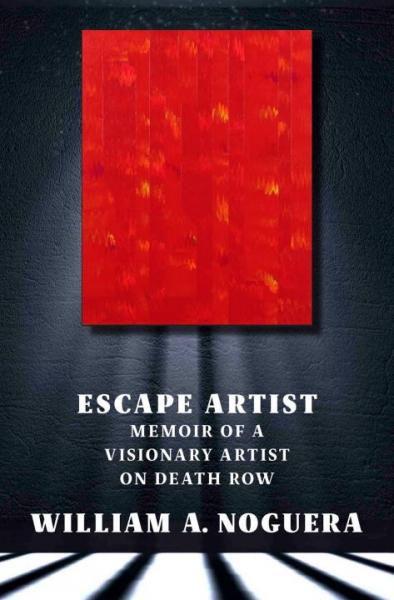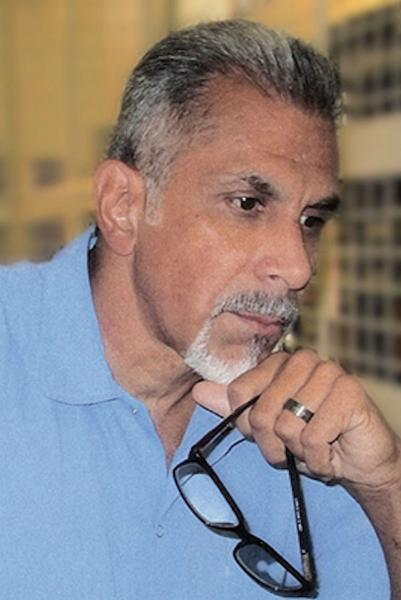- Categories:
An Indies Introduce Q&A With William A. Noguera
 William A. Noguera is the author of Escape Artist: Memoir of a Visionary Artist on Death Row (Seven Stories Press), an Indies Introduce Winter/Spring 2018 adult debut and a January Indie Next List pick.
William A. Noguera is the author of Escape Artist: Memoir of a Visionary Artist on Death Row (Seven Stories Press), an Indies Introduce Winter/Spring 2018 adult debut and a January Indie Next List pick.
“Escape Artist is a gripping, sad, inspirational, and amazing story of being on death row in America’s worst prison, and, more interestingly, the emotional journey that got Mr. Noguera into prison and how he evolved into a world-class artist and rehabilitated human being,” said Chris Morrow, owner of Northshire Bookstore in Manchester Center, Vermont, and Saratoga Springs, New York.
Morrow served as the chair of the Indies Introduce bookseller committee that chose Noguera’s book for the debut program. Noguera is a visual artist who has lived on death row in San Quentin Prison for the past 34 years.
Here, Morrow talks with Noguera about the author’s life and art, which led to the writing of his debut.
Chris Morrow: What do you hope people get out of your book?

William Noguera: I hope that what people get out of my book is that a tragic experience can be transmuted into a transcendent one. That by sharing my story, others can avoid the mistakes I’ve made and I can give hope to those who have made mistakes — that it’s possible to change the road they’re on and make a positive contribution to someone in need. I hope Escape Artist helps the reader find within themselves the strength to overcome what they face. That it changes lives and opens dialogue about crime, punishment, rehabilitation, youth offenders, and, of course, the power of art to heal.
CM: How has art changed your experience of prison? Of life?
WN: Art has not changed my experience of prison or of life. Prison and life have formed my experience of art — the latter shapes the former. Art has been a part of my life since birth; both of my parents are artists. It’s always been in me and who I am, not where I’ve lived. Art is a way of life. A language used to convey experiences and emotions. By accepting art as my medium of expression, my senses are open to an array of interrelated phenomena that transcend rational explanation, consuming my three-dimensional world. I live my life, no matter my surroundings, as an affirmation to the creation of art.
CM: Do other inmates see your art? If so, do they respect art as a legit endeavor?
WN: In answer to the first part of your question: yes, other inmates see my art. In answer to the second part of your question: I’ve never asked or speculated if they respect art as a legitimate endeavor. Those confined behind these brutal walls and those employed here have seen my work when walking by my cell, or when looking at the work on my website — and now some of my art can be seen in my memoir. Over the years, many times, I’ve borne witness to someone looking at a painting drying in my cell and seen tears on their face or a gentle smile. Some people only take a quick glance and keep walking; every response is true and perfect.
CM: When you think back to your youth and the events that landed you in prison, what is it that most strongly comes to mind?
WN: When I think back to my youth and the events prior to being sent to prison, the thought that most strongly comes to mind is that I will forever feel sorrow and remorse. The fact that I was so young and immature; the negative effect of my environment and overwhelming conditions. As a mature adult, I realize that I didn’t understand the consequences of the life I was living and could not have anticipated the terrible outcome I would be responsible for.
CM: While prison, especially death row, is obviously beyond conception for most people on the outside, is there something you have learned in prison that you think we can learn from?
WN: Something I’ve learned in prison is that society needs to implement more education about the effects of abuse, bullying, and the consequences of these actions, which cannot be overstated. I am surrounded by a world full of violence and brutality, yet I’ve made a conscious decision to rehabilitate myself by accepting responsibility for my past actions and taking actions of reparation by helping others now and in the future. We all possess the power and strength to overcome the worst conditions — we should take the opportunity to find someone who may be in need of help.
Escape Artist: Memoir of a Visionary Artist on Death Row by William A. Noguera (Seven Stories Press, 9781609807979, Hardcover Nonfiction, $28.95) On Sale Date: 1/9/18.
Find out more about the author at williamnoguera.com. Many thanks to Melissa Ysais, executive director of the William A. Noguera Trust, for facilitating this Q&A.
ABA member stores are invited to use this interview or any others in our series of Q&As with Indies Introduce debut authors in newsletters and social media and in online and in-store promotions. Please let us know if you do.

